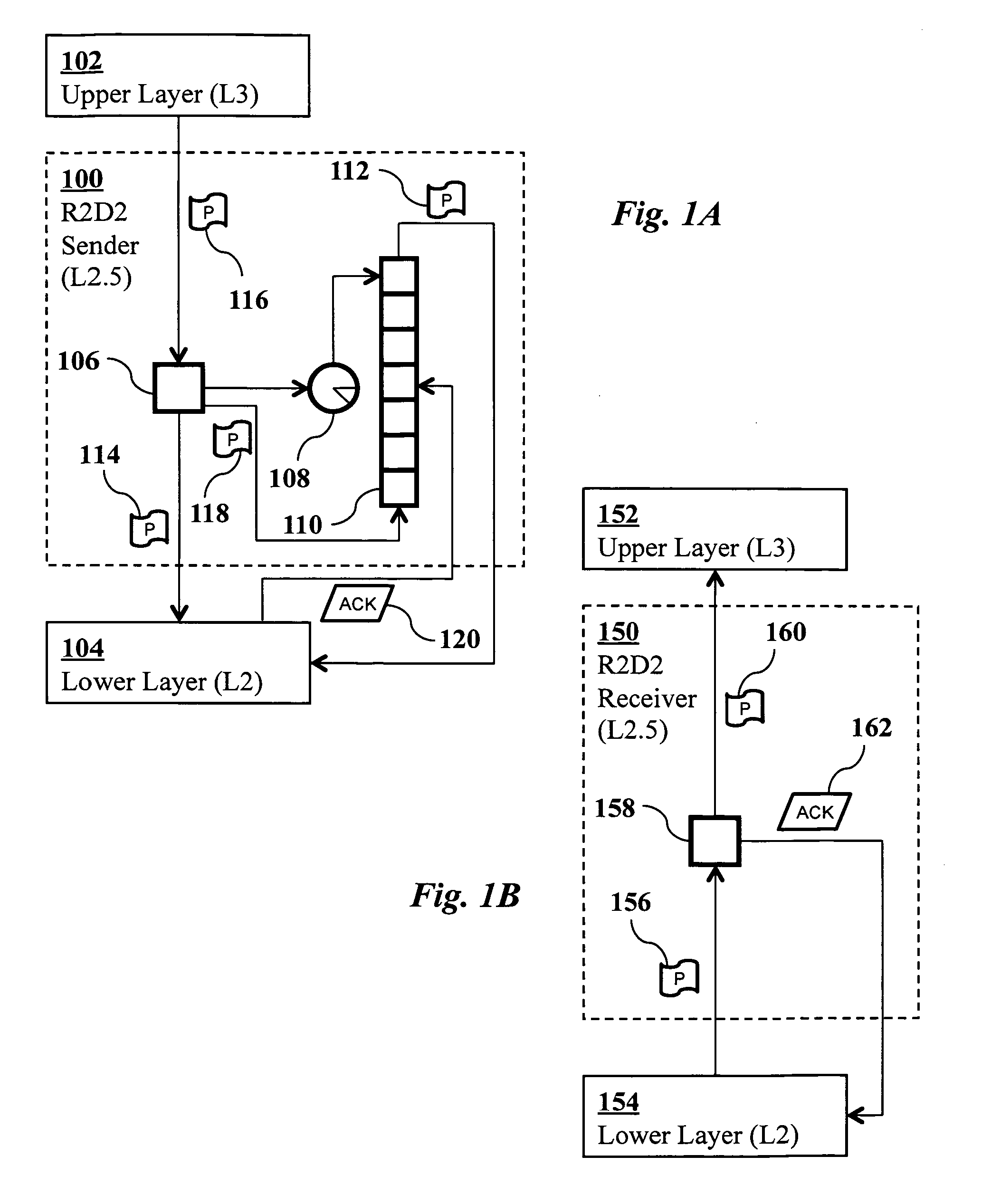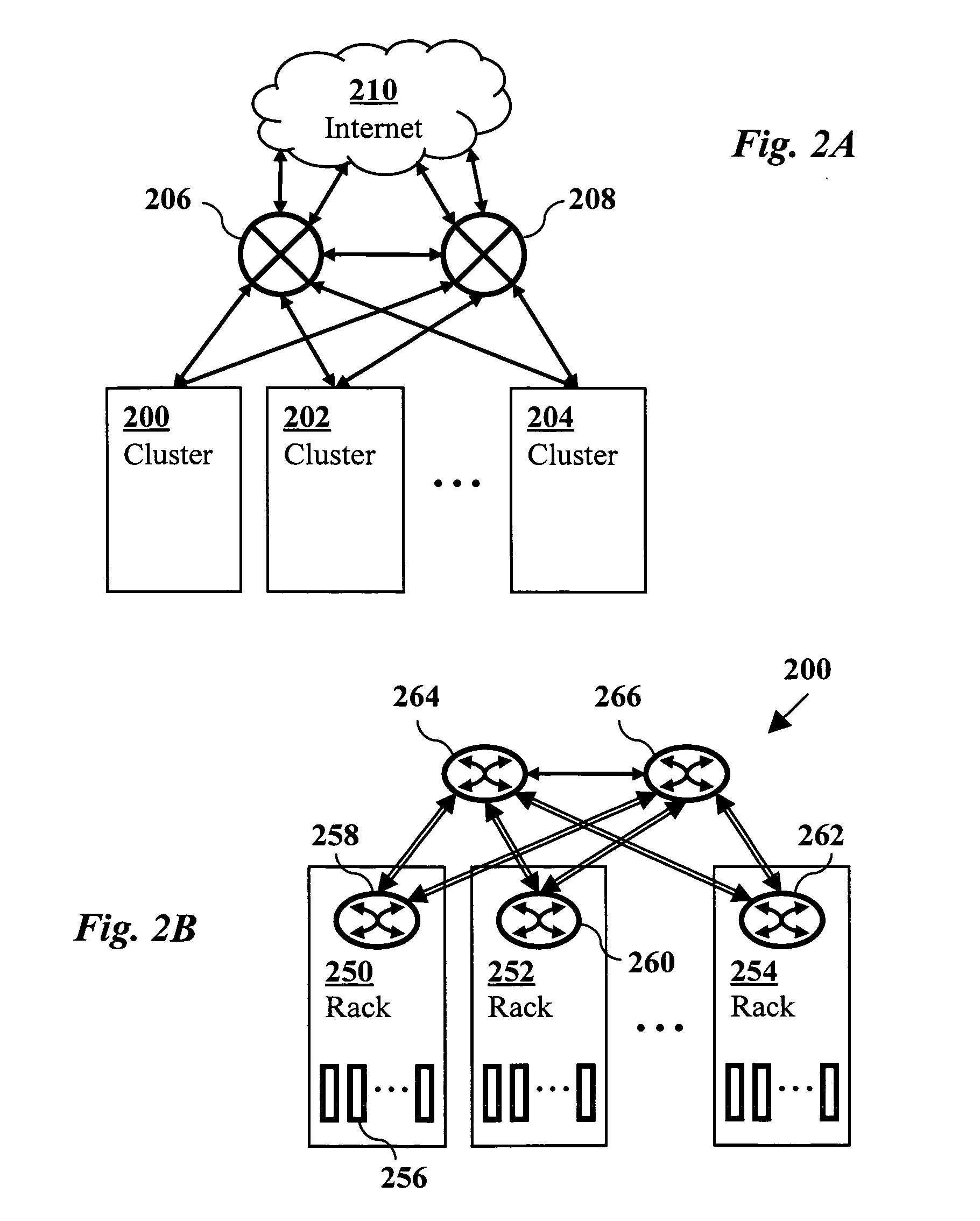Method for reliable transport in data networks
a data network and reliable technology, applied in the field of data communication methods and digital computer networks, can solve the problems of packet loss, workload generated in large data centers by an increasingly heterogeneous mix of applications, and become difficult to ensure the reliable delivery of packets across the interconnection fabric, so as to improve the flow completion (transfer) time, facilitate the migration of virtual machine network state, and facilitate the effect of reliable transportation
- Summary
- Abstract
- Description
- Claims
- Application Information
AI Technical Summary
Benefits of technology
Problems solved by technology
Method used
Image
Examples
case 1
ng TCP / IP Data Packets.
[0049]For each R2D2-protected TCP / IP data packet, the R2D2 receiver generates an L2.5 ACK. The L2.5 ACK packet structure is identical to a TCP / IP packet. However, in order to differentiate an L2.5 ACK from a regular TCP / IP packet, one of the reserved bits inside the TCP header may be set. The received packet's R2D2 key is obtained, and the corresponding fields inside the L2.5 ACK are set.
ACK Aggregation.
[0050]Since the thread 314 processes incoming TCP / IP packets in intervals of lms, it is likely that some of the incoming packets are from the same source. In order to reduce the overhead of generating and transmitting multiple L2.5 ACKs, the L2.5 ACKs going to the same source are aggregated in an interval of the R2D2 thread. Consequently, an aggregated L2.5 ACK packet contains multiple R2D2 keys for acknowledging the multiple packets received from a single source.
case 2
ng L2.5 ACKs.
[0051]As mentioned in the previous paragraph, an L2.5 ACK packet can acknowledge multiple transmitted packets. For each packet acknowledged, the hash table 306 is used to access the copy of the packet in the wait queue. This copy and the hash table entry of the packet are removed.
[0052]It is possible that the L2.5 ACK contains the R2D2 key of a packet that is no longer in the wait queue 304 and the hash table 306. This can happen if a packet is retransmitted unnecessarily; that is, the original transmission was successful and yet the packet was retransmitted because an L2.5 ACK for the original transmission was not received on time. Consequently, at least two L2.5 ACKs are received for this packet. The first ACK will flush the packet and the hash table entry, and the second ACK will not find matching entries in the hash table or the wait queue. In this case, the second (and subsequent) ACKs are simply discarded. Such ACKs are called “unmatched ACKs.”
Retransmitting Outst...
PUM
 Login to View More
Login to View More Abstract
Description
Claims
Application Information
 Login to View More
Login to View More - R&D
- Intellectual Property
- Life Sciences
- Materials
- Tech Scout
- Unparalleled Data Quality
- Higher Quality Content
- 60% Fewer Hallucinations
Browse by: Latest US Patents, China's latest patents, Technical Efficacy Thesaurus, Application Domain, Technology Topic, Popular Technical Reports.
© 2025 PatSnap. All rights reserved.Legal|Privacy policy|Modern Slavery Act Transparency Statement|Sitemap|About US| Contact US: help@patsnap.com



